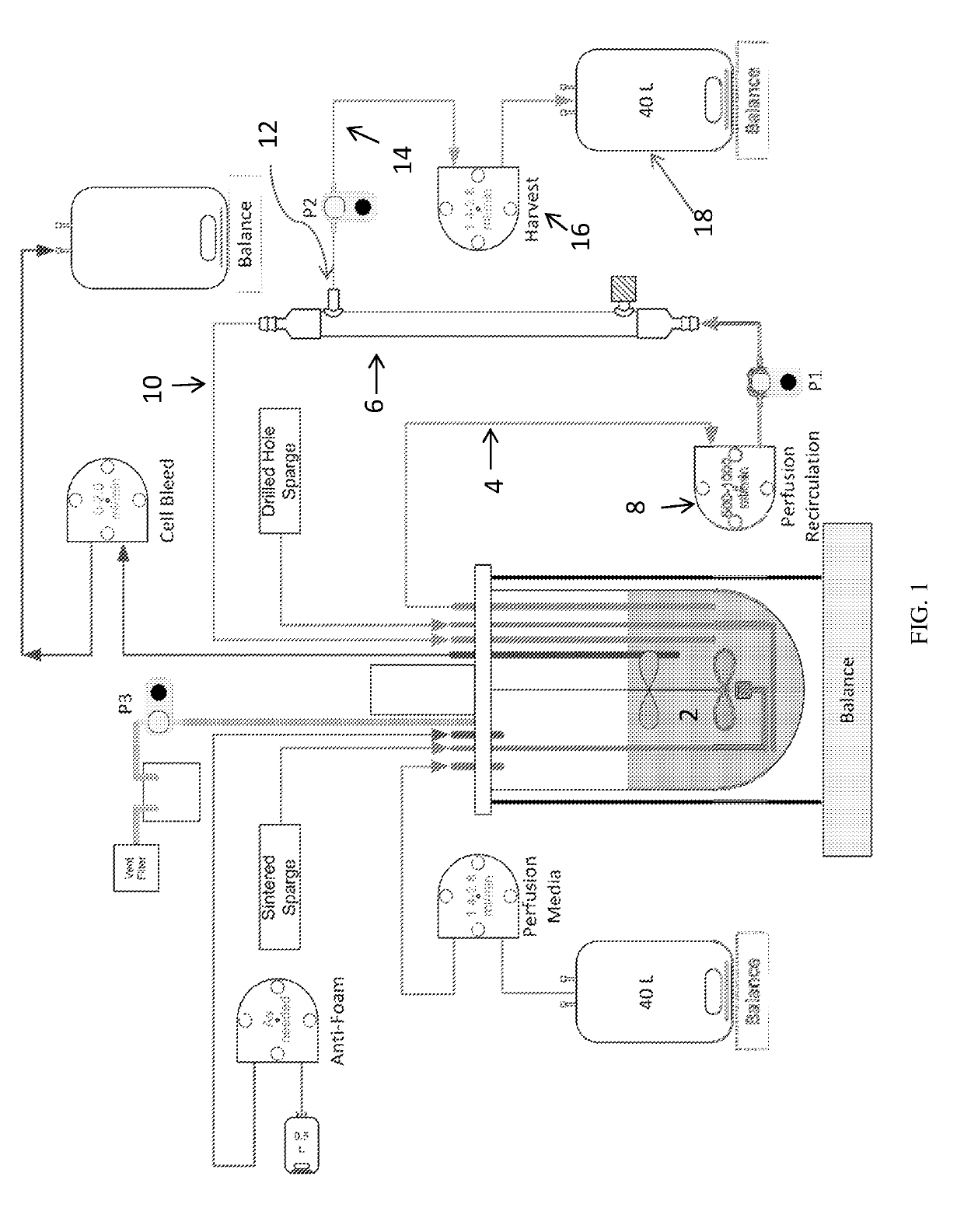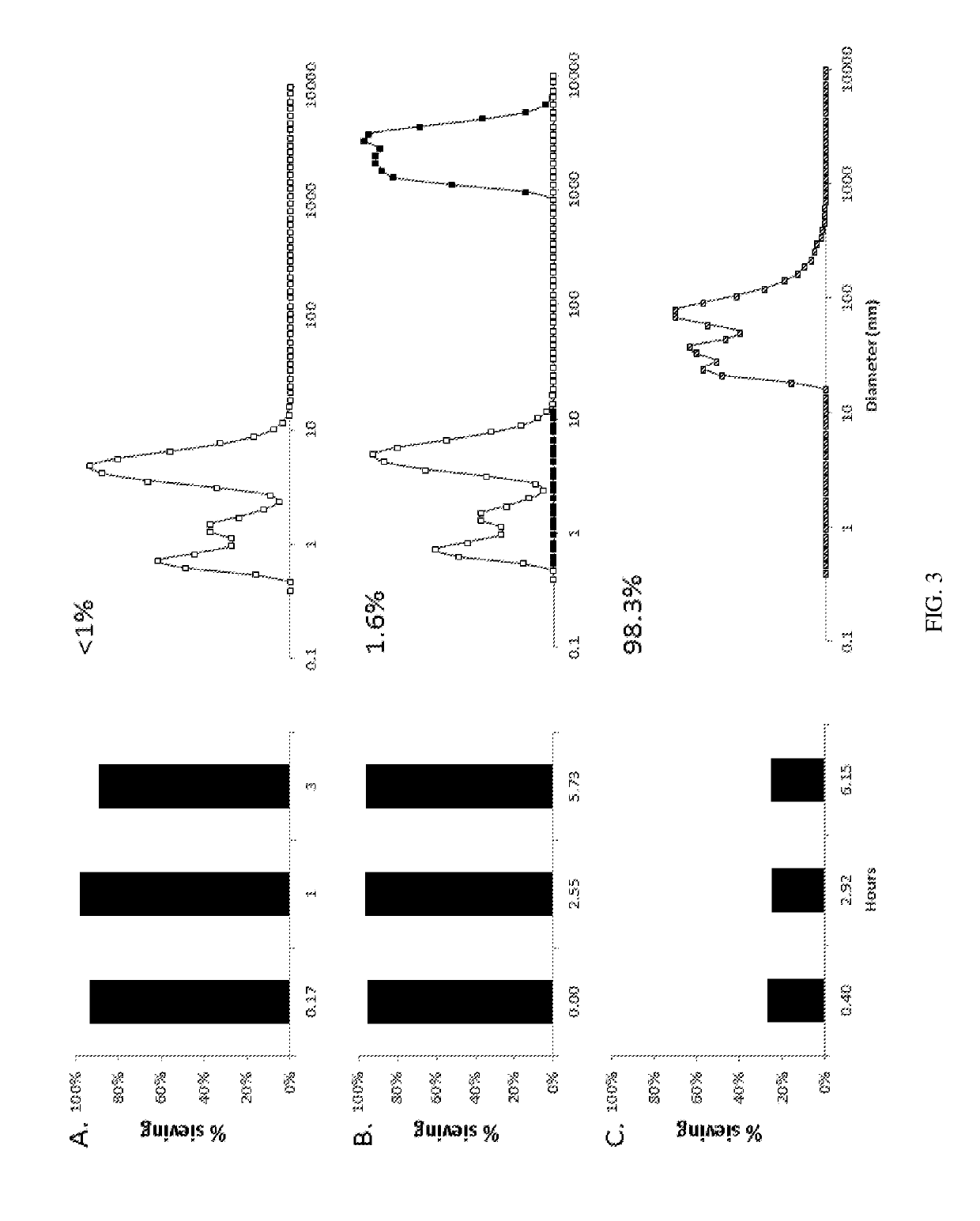Cell retention device and method
a cell retention and cell technology, applied in specific use bioreactors/fermenters, biomass after-treatment, biochemical apparatus and processes, etc., can solve the problems of limiting the filtration rate, the possibility of clogging of relatively small pores more readily, and the ultrafiltration retention of high molecular weight products in bioreactors, etc., to achieve the effect of increasing shear or flow rate, avoiding significant loss of product sieving capabilities, and high product sieving
- Summary
- Abstract
- Description
- Claims
- Application Information
AI Technical Summary
Benefits of technology
Problems solved by technology
Method used
Image
Examples
example 1
Cell Retention Membranes and Culture Fluid Flow Profiles
[0069]Cell retention membranes used for perfusion cell culture are often operated in tangential flow filtration mode (TFF) and are composed of polymer materials such as modified or unmodified Polystyrene (PS), Polyethersulfone (PES), Poly(vinylidene fluoride) (PVDF), etc. with pore sizes less than 0.2 micron. For many processes, it is desired that the cells are retained within the bioreactor, and that the spent media and product molecule pass through the filter material where it can be captured and purified. FIG. 2 (left panel). When in operation in a perfusion cell culture, and due to fouling (clogging) by cellular debris and macromolecules, filter membranes gradually lose their sieving capacity and behave as a molecular sieve inhibiting the transport of even the product molecules through the membrane, thereby dramatically reducing the product recovery. FIG. 2 (right panel). As shown in FIG. 2 (right panel), sieving capacity i...
example 2
Particle Size Distribution and Analysis
[0071]The goal of this example was to determine the particle sizes of the particles / debris present in the filtrate of a 0.2 micron filter, cell culture pellet resuspended in filtrate, and cell culture supernatant. FIG. 3.
[0072]To determine which particle size range contributes the most to product sieving, cell culture was divided into three groups and assessed separately for product sieving offline using new 0.2 μm hollow fibers. To carry out this example, filtrate and cell culture were collected from a perfusion reactor on Day 8 of culture prior to the start of a cell bleed. The culture was centrifuged to separate cell culture material by size. Three distinct samples were thus obtained: A) the material in the filtrate stream (1 um in diameter), and C) the material in the reactor supernatant.
[0073]Each separate section was then cycled through an unused 0.2 μm PS hollow fiber mimicking a perfusion setup. Samples from the filtrate and feed lines ...
example 3
Filters with Pore Sizes Ranging from 0.45 μm to 500 KD
[0076]Based on the particle size distribution analysis conducted in Example 2, it was hypothesized that filter membranes with either larger or smaller pores than the debris should not block the pores.
[0077]A range of pore sizes from 0.45 um down to 500 kD were investigated. All demonstrated decreased product recovery throughout the entire time course of the experiment. The experimental results, however, showed that the smaller pore size membrane did not result in acceptable sieving profile. Moreover, the sieving profile was as poor as or even poorer than the 0.2 um filter in membranes with larger pore sizes, e.g., 0.45 μm. FIG. 4.
[0078]It was concluded that pore sizes smaller than 0.2 μm did not help the product sieving phenomenon. Interestingly, utilizing a nominally larger pore size (0.45 μm) appeared to have no beneficial impact and even exacerbated product sieving at certain time points compared to the 0.2 um.
PUM
| Property | Measurement | Unit |
|---|---|---|
| pore size | aaaaa | aaaaa |
| size | aaaaa | aaaaa |
| size | aaaaa | aaaaa |
Abstract
Description
Claims
Application Information
 Login to View More
Login to View More - R&D
- Intellectual Property
- Life Sciences
- Materials
- Tech Scout
- Unparalleled Data Quality
- Higher Quality Content
- 60% Fewer Hallucinations
Browse by: Latest US Patents, China's latest patents, Technical Efficacy Thesaurus, Application Domain, Technology Topic, Popular Technical Reports.
© 2025 PatSnap. All rights reserved.Legal|Privacy policy|Modern Slavery Act Transparency Statement|Sitemap|About US| Contact US: help@patsnap.com



